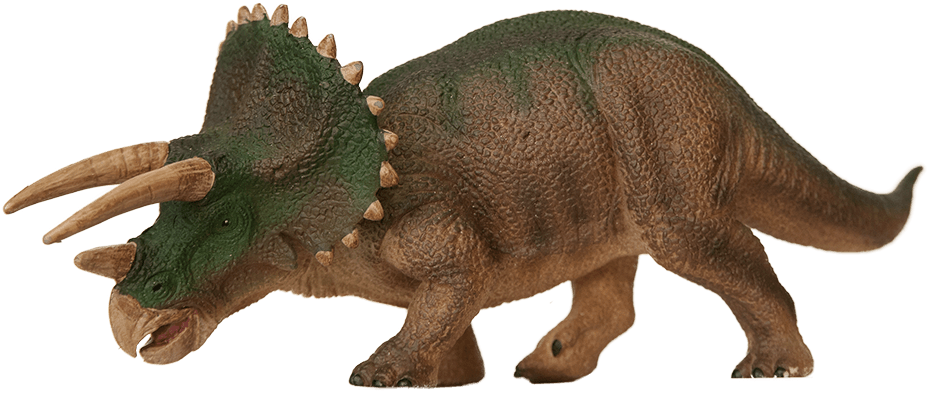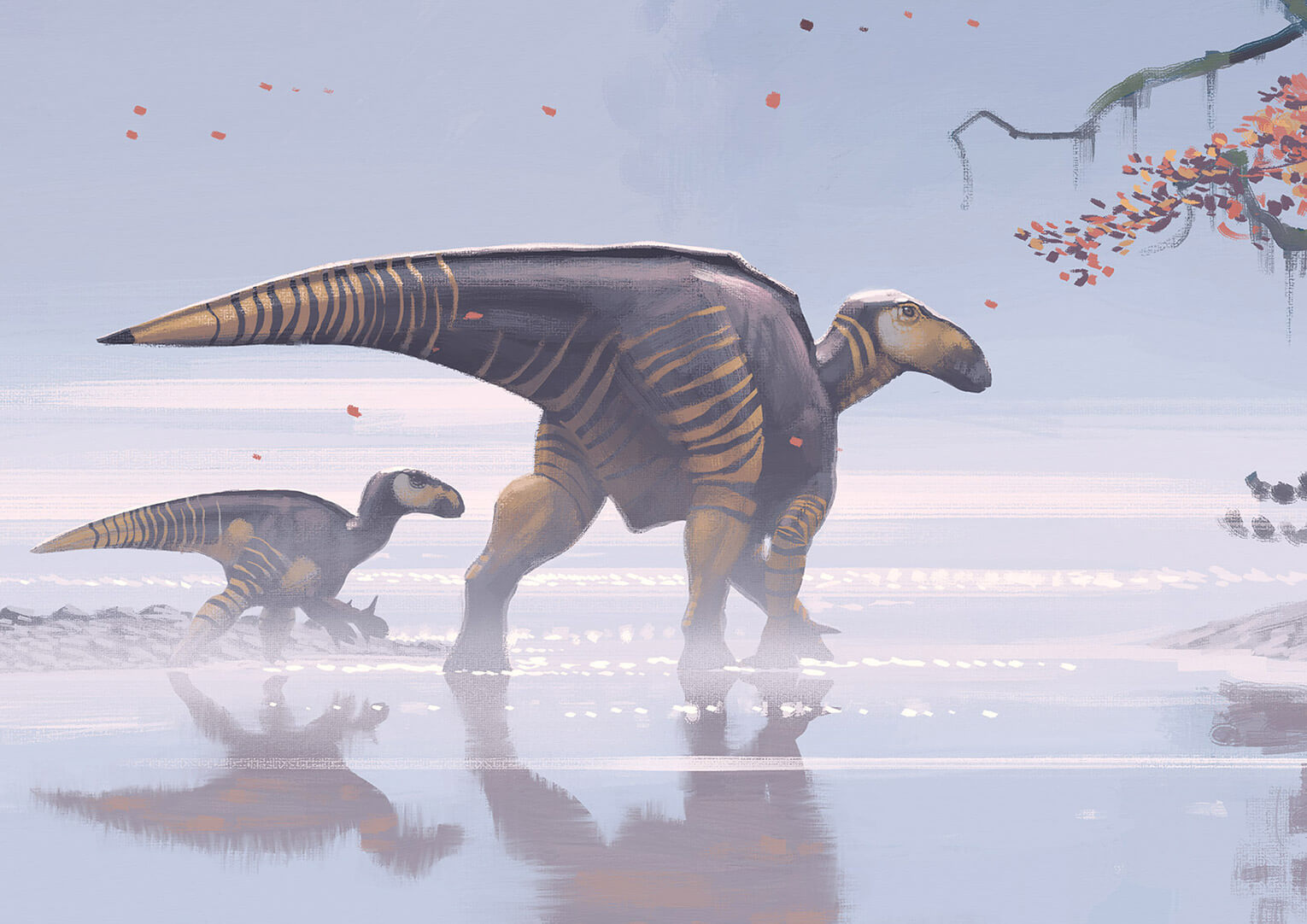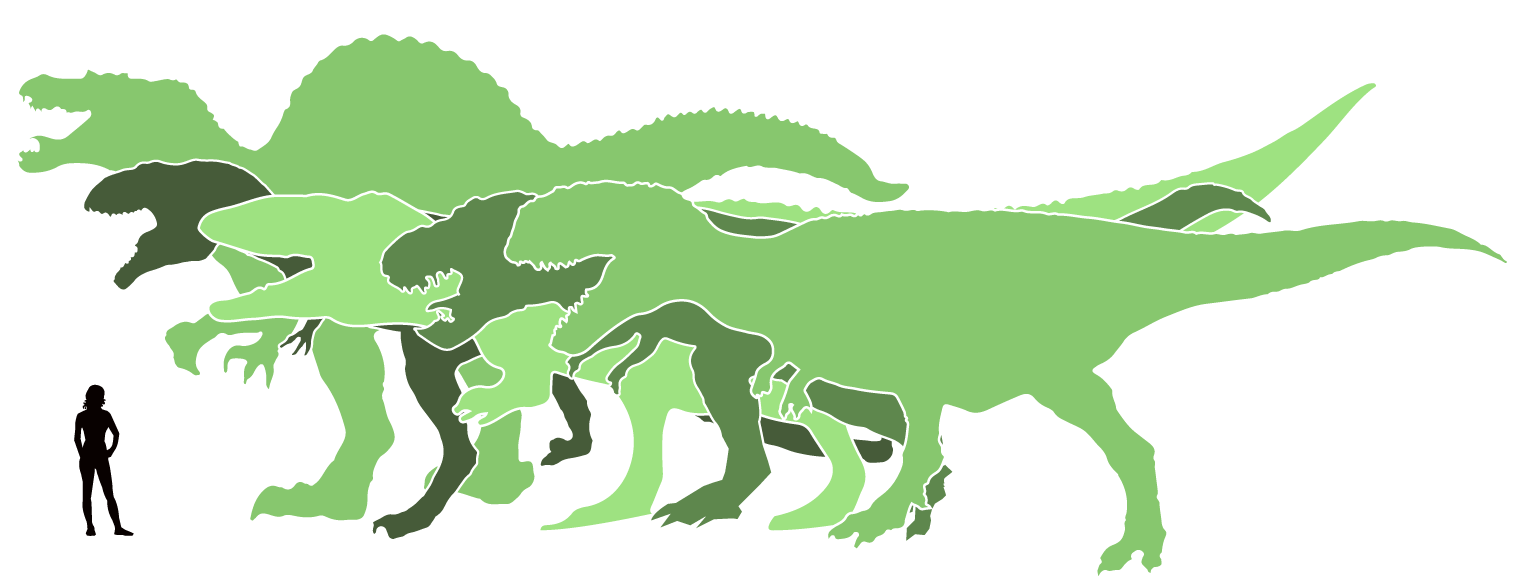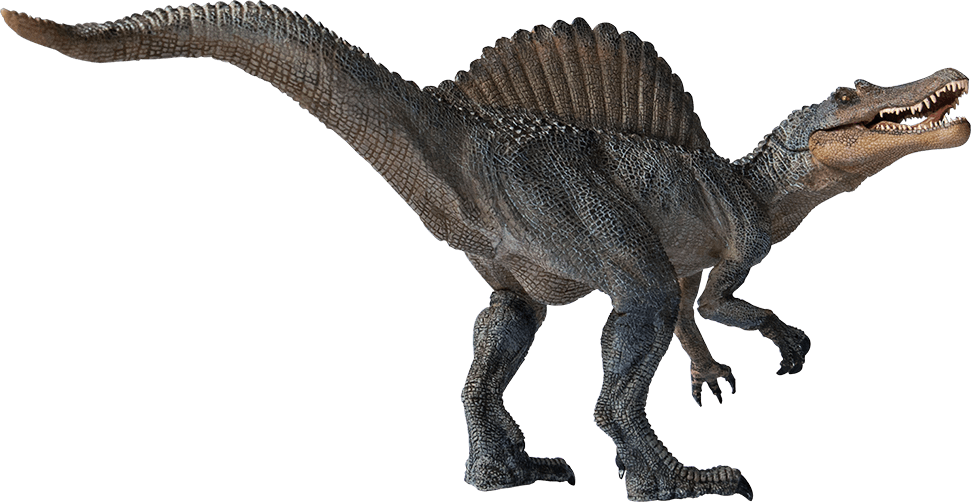Dinosaurs
Dinosaurs thrived during the Cretaceous, until they died out at the end of the period. Before that, new species evolved – both meat-eaters and plant-eaters. The meat-eating dinosaurs become the largest land-dwelling predators that have ever existed.
New teeth
Dinosaurs are divided into two categories, lizard-hipped and bird-hipped, depending on the shape of the pelvis. The bird-hipped group had the greater number of species during the Cretaceous.
They were all plant-eaters and evolved a number of fantastic shapes, including the armoured Ankylosaurs and the horn-equipped Triceratops.

Ankylosaurus and Triceratops, two bird-hipped dinosaurs, the group that had the greater number of species.
Photo: Annica Roos

A subgroup of bird-hipped dinosaurs with many species was comprised of the two-legged ornithopods.

Iguanodon, an ornithopod.
Image: Simon Stålenhag
The bird-hipped dinosaurs differed from all other reptiles in that they evolved special cheek teeth which enabled them to chew food. Other species could only tear their food apart and swallow it whole.
Bird-hipped dinosaurs also evolved muscular cheeks that could hold food in the mouth, which was necessary in order to chew.
The cheek teeth grew close together and formed an efficient mill for grinding vegetation. That made the food easier and quicker to digest in the stomach.

Cheek teeth of Triceratops and Edmontosaurus.
Photos: Rémih (left), Tim Evanson (right)
Meat-eating giants
It was during the Cretaceous that the largest meat-eating dinosaurs evolved, the biggest predators that have ever existed on Earth. The best known, Tyrannosaurus rex, was fourth largest with a maximum length of 12 metres.

The largest meat-eating dinosaurs evolved during the Cretaceous. From the left/back: Spinosaurus, Giganotosaurus, Carcharodontosaurus, T-rex, and at the front Mapusaurus.
Image: Annica Roos
The biggest predatory dinosaur yet known is Spinosaurus. It was discovered in North Africa and grew up to 17 metres long. At up to three metres in length, its crocodile-like head was larger than any other dinosaur’s.
Recent research indicates that it was probably the only dinosaur that spent nearly its entire life in water.

Spinosaurus, the biggest predatory dinosaur yet known,
with a three meter long, crocodile-like head.
Photo: Annica Roos
Unlike other large predatory dinosaurs, Spinosaurus fed mainly on fish. It also hunted pterosaurs and smaller dinosaurs near bodies of water.

